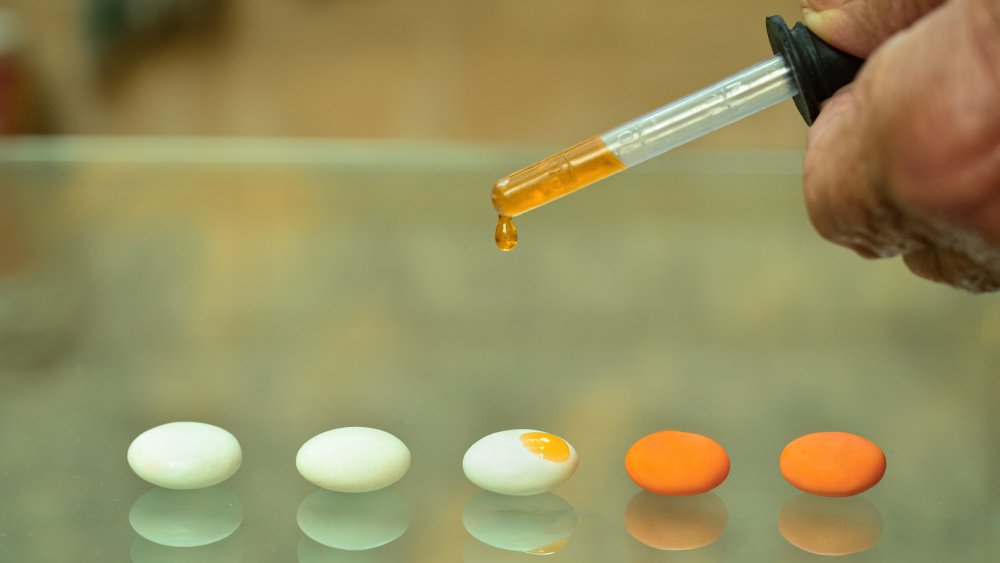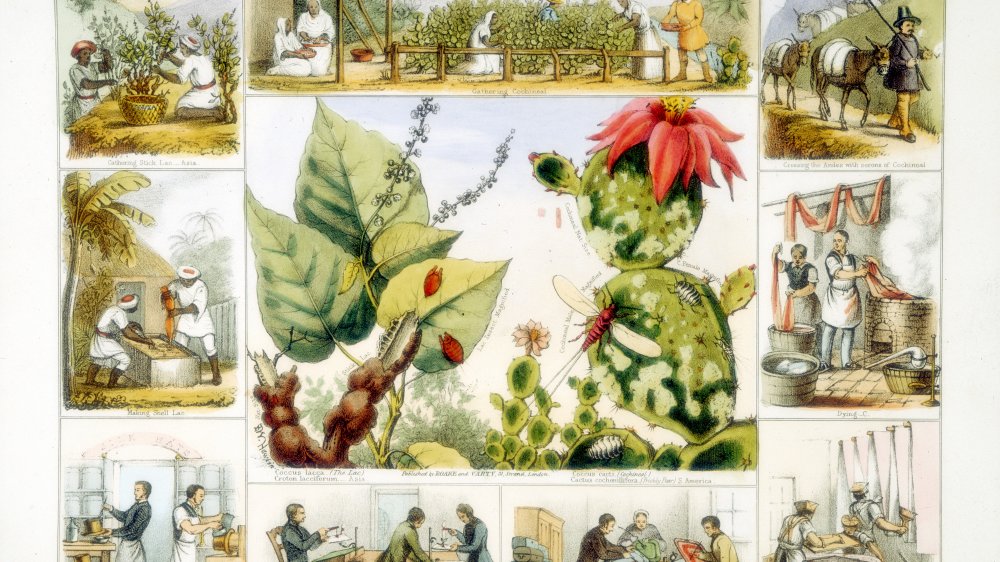Here's What They Really Use To Make Mentos Different Colors
Mentos would appear to have absolutely no natural coloring. After all, nothing natural aligns itself with a pastel palette like Rainbow Mentos. While their coloration is artificial in the sense that the colors were added to the candy, the colors themselves are derived from natural sources. At least, according to Rainbow Mentos's ingredient list. Mentos Spearmint, however, is another story with its Yellow 5 and Blue 1. It's a safe assumption that they used the numbered color route here because natural green dyes don't achieve the same poisonous-seeming yet appetizing affect needed for green candies.
Still, Mentos broadly uses colorings derived from non-chemical sources. In the range of coloring ingredients, you have carmine, turmeric Oleoresin, beta-carotene, vegetable juice, annatto extract, and beetroot red. Turmeric oleoresin is simply a type of turmeric. While putting turmeric on candy might sound odd, Food Dive reported in September that Chr. Hansen, a Danish bioscience company, had concocted a turmeric yellow dye that dealt with the off flavor. Delish says you can find the reddish-orange dye beta-carotene in carrots and sweet potatoes among others. Annatto extract comes, as The Spruce Eats explains, from the achiote tree, which is indigenous to Central and South America, Mexico, and the Caribbean. It is used to color everything from Mentos to fish to cosmetics. And beetroot red is very much what its name suggests — a red color derived from beetroot via a variety of means, some of which are detailed by the blog Just Beat It.
Oddly, bugs are behind the coloring of some Mentos
We skipped over carmine, the dye behind Mentos' deeper red hues, as it deserves its own section. Part of the reason is due to the fact that, as Slate wrote in 2015, red is the most popular candy color. The other part of it is the fact that Mentos fall into the category of foods you thought were vegan, but definitely aren't.
Carmine, also known as cochineal extract or natural red 4, is made with the dried bodies of the female cochineal, an insect from Latin America that has been used in this manner centuries before candy corporations existed. As Live Science notes, however, cochineals can also provoke severe allergic reactions in people.
Besides that, there are no other health risks. This is fortunate because carmine appears everywhere. The BBC reports that, like annatto, carmine is used in everything from Mentos to soft drinks to lipstick. The use of insect bodies means that the dye is not vegan, a fact brought up in 2012 when a customer complained to Starbucks about their use of the carmine in their foods. However, the BBC raises the opposing arguments that no other dye is as deep or long lasting as carmine. And, even more importantly, the farming of cochineals provides some Peruvians with their livelihoods.
If the cochineal's inclusion disgusts you, you can simply buy Mentos Mint, Mentos Fruit, or share the Mentos Rainbow instead. However, the other two are made with beeswax, and aren't vegan either.

